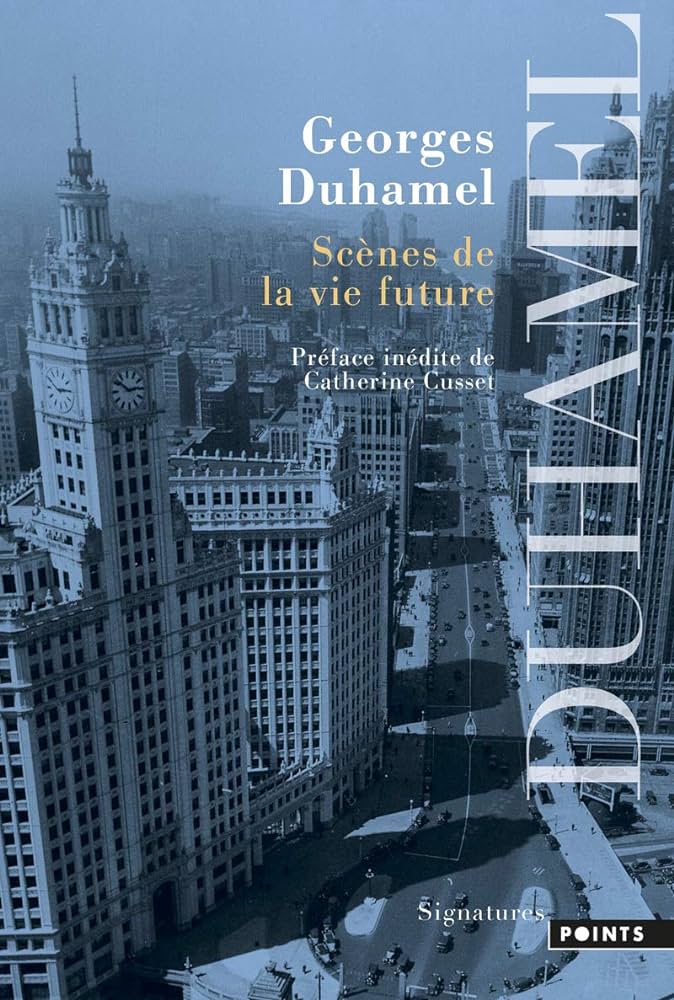
In these days I am reading a book by a not very well-known author – at least outside his homeland – Georges Duhamel (1884-1966), entitled “Scènes de la vie future”, first published in France in 1930, recently published in Italian for Edizioni Medusa (unfortunately I am not aware of any English translation).
It is the story of a journey made by the French writer around the United States at the end of the twenties (therefore precisely at the outbreak of the Great Depression which would upset the USA and Europe and lead to the Second World War), during which he writes in the form of diary a merciless and deeply disturbing account of the most sensational, contradictory and controversial aspects (sometimes welcomed in Europe with uncritical enthusiasm) of the overwhelming technological, economic and industrial development taking place in that country. As we know now, this model of development, precisely after the “regenerative” catastrophe of the WW2, would then impose itself on a intercontinental and Western level as the primary parameter of the world balances that have accompanied us up to the current historical moment, in which for the first time these balances they are beginning to reveal themselves to be seriously compromised and threatened.
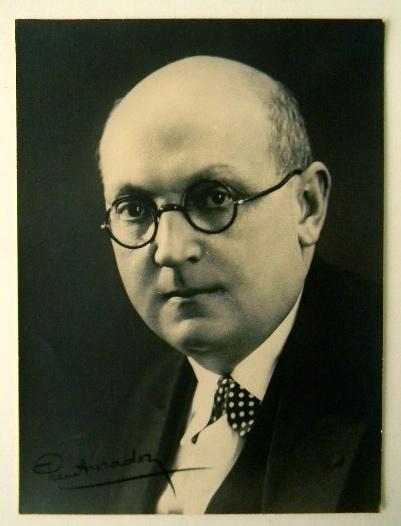
Duchamel’s vision is extremely, indeed furiously, critical of this model, as it was just taking shape in his time, from a point of view that until a few years ago I would have defined reactionary without hesitation, but which today reveals itself in many respects almost “prophetic”.
The project of “pure” American capitalism, based on profit, unlimited growth and the exploitation – even predatory – of human, economic and environmental resources, is highlighted by this author with extraordinary clarity and, as I was saying, beyond the tones of a millennialist invective, if we try to ignore the original disgusting reactionary virulence, it reaches us with a message that (unfortunately) sounds prophetic for the current events we are experiencing day by day: from climate change, to the return of conflicts in and around the Europe, to the re-emergence of more or less fanatical far right-wing parties and organisations on a global political level.
The pages dedicated to the large industrial intensive slaughterhouses, in their unsustainable crudeness and treated in a symbolic way of an economic and global power “system”, would be enough to understand how much this author has been able to see forward regarding the havoc that the so-called civilisation of mass prosperity was already doing to the detriment of the planet’s resources, something for which we are only now beginning to perceive – and pay – the consequences.
In his visionary pamphlet Duchamel – and this is the reason why I quote him so extensively here – also does not neglect to put under fire what was already proving to be one of the most flourishing and iconic American industries which, although it was technically “born” in Europe, right here would have laid its deepest and most vigorous roots: the film industry. The movie system. Hollywood.
The author refuses to recognize any artistic status for the still pubescent American film industry – just as it was establishing itself, after the first steps as fairground attractions and the clumsy attempts to mimic theatrical art, imposing an original identity and an increasingly autonomous language – and he vigorously denounces what he sees as very serious risks not only for the freedom of artistic expression, but also for the very intellectual and mental integrity of the audience, unaware and defenseless, exposed to such shows.
The imposition of prefabricated and mass-distributed images, somehow like Ford Model T cars, of elementary and standardised narratives – with the manifest sole aim of generating profit – on mass audiences “hypnotised” by the star system, deprived of any critical spirit by the nature itself of the projection of an artificial “dream” on a silver screen, constitutes in the eyes of the French author a true mass corruption of spirits and souls, definitively and indisputably opposed to the vocation and mission of spiritual and moral elevation of the “noble arts”. An authentic anti-humanistic revolution.
Certainly these are extreme positions, which may sound, as I said, darkly reactionary, but we cannot fail to glimpse in this analysis all the limits, risks and distortions inherent in this which today we definitively recognize as an “art form”, which however remains imbued with technology and industrial production logic, with balances between costs and profits, between the paranoid search for “novelty”, for the “never seen before”, and at the same time the total conformist subjection to the taste of the mass public.
Then came Einsenstein, John Ford, Dreyer, Kurosawa, DeSica, even Disney, just to mention the first who come to mind, to demonstrate how “art” could fully find its place even in what could appear comparable to an industrial production like any other. Indeed, it could involve, excite, entertain and form audiences that were potentially much larger – and in a certain sense “democratic” – than those hitherto interested in the so-called “major arts” shown in their temples of choice, as theatres, concert halls, museums, libraries.
In truth, the film industry has had not so great affinity with other industrial sectors since its origins, as it was, whether we want to recognise it or not, a “cultural industry“, in which it was never possible to shape and above all fully predict the tastes of the final buyers, the audiences: even today these tastes remain largely unpredictable, and film production remains largely a “gambling” in which the risk component of the investment remains extremely high compared to other sectors.
Moreover, even the “noble arts” that are so dear to the french writer have never been able to be truly independent from great structures of production and power, from investments that are sometimes even colossal in resources and production technologies: let’s think of certain huge, sumptuous cathedrals, artistic masterpieces themselves, in turn the setting for sculptures and paintings of the highest historical, cultural and, obviously, artistic value: cinema is not very different from all this.
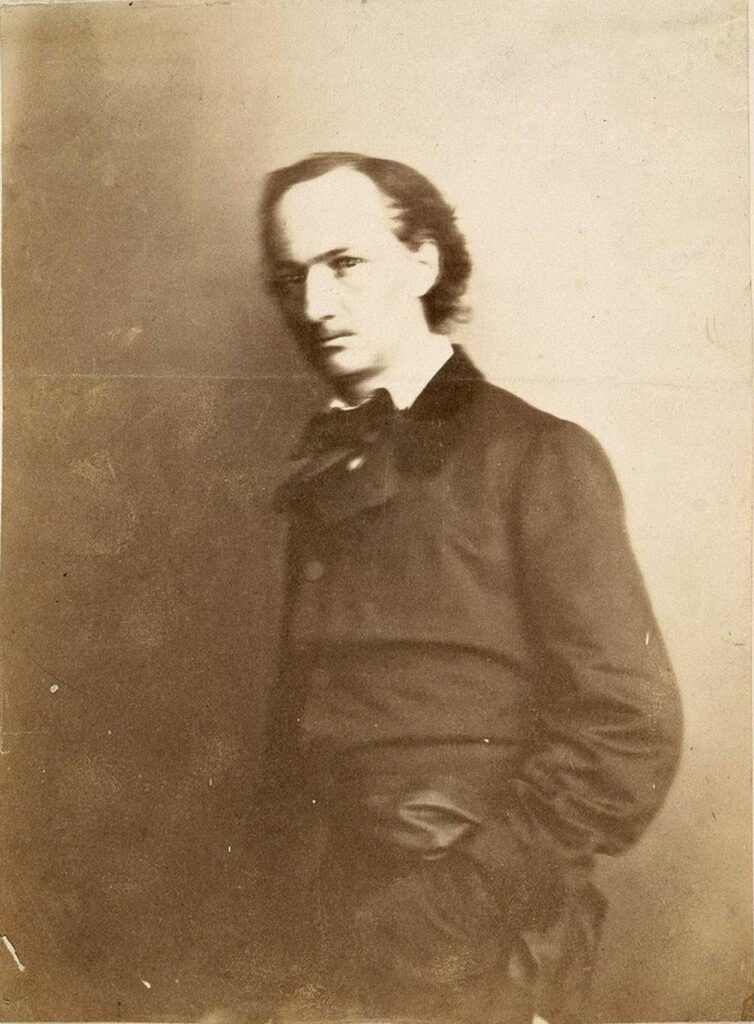
With not very different tones, much earlier, another Frenchman, much more well-known and celebrated than Duhamel, the “poète maudit” Charles Baudelaire (1821-1867) had railed against the nascent art of photography, which in his opinion would have provoked tout court the death of the noble pictorial art… except appearing himself in some of the most moving portraits by one of the first recognised “masters” of the art of photography, Felix Nadar (1820-1910).
And in the end, obviously, the art of painting did not become extinct at all, but found other ways of expression in which photography could not follow it, thus opening, for both, to an entirely new conception of the “function” of visual arts, between aesthetics and documentation, reproduction and creation.
All things that sound very familiar to us, given that animation and cinema are in a certain sense the natural “daughters” of photography, or rather the technical reproduction (to get back to Benjamin) of reality. Moreover, the corruption and disappearance of the aura, again in the Benjaminian sense, remains the most valid and consistent critical observation of both Duhamel and Baudelaire, and it is no coincidence, as we have seen, that this is something with which we are still dealing today, as the aforementioned generative AIs have suddenly and noisly landed on the great stage of ideas.
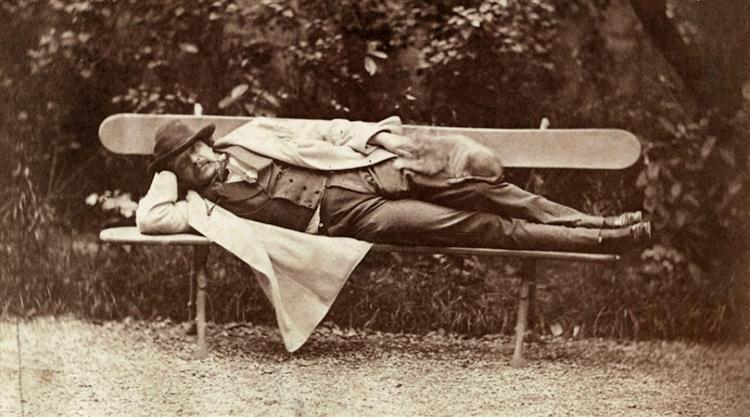
I write all this, at the conclusion of the first part of these notes and considerations of mine on the art and craft of animation, not only because I believe that animation itself is so rooted in the body of the film industry as to embody, by its very nature, its primary and most marked artistic vocation, but also because I have the feeling that never before in recent years have these themes become so relevant again: themes and issues that seemed outdated, but that now the invasive and pervasive diffusion of certain technologies in the delicate creative organism of high-profile human activities, has sensationally re-proposed their validity.
These technologies, to an incomparably greater extent than in the past, have unleashed a real storm of ethical, legal, legislative, moral and, last but not least, aesthetic and creative implications, and have opened up a completely new and in many ways worrying scenario. Precisely this, in the first instance, pushed me to write these pages, hoping that my contribution, despite its modest dimensions, can help other people, artists, colleagues, especially young people, by making available my experience gained over several decades of activities in the sector.
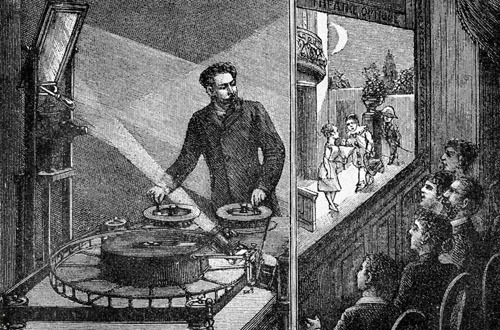
Due to my education and mentality, I have always been very sensitive and readily available towards every technical and technological evolution that over the years has directly or indirectly involved my activity, well aware of how animation has always been closely linked to technical devices, since its origins, since the very first manual contraptions of Charles-Émile Reynaud (1844-1918) like his famous Théâtre Optique. Moreover, if we think about it carefully, in the face of unrepentant idealists (including the aforementioned Duhamel), there is no art that is completely unrelated to any technical component, which almost always precedes and determines the aesthetics, the language and the contents. Any art, in general, consists of nothing other than the production of “artefacts” through the use of manual skills and more or less sophisticated technical tools. Even music, which is considered the most “abstract” of all the arts, can only reach its public through the use of appropriate technical tools, i.e. musical instruments, from the prehistoric drum to Pro Tools.
For this reason I have always been very ready to adopt for my profession every interesting innovation that the market offered over the years, every tool that promised to make my work easier and quicker, allowing me to obtain better and higher results, moving from film to digital, from traditional 2D to 3D animation, from pencil to Cintiq. But this is precisely the point: with Generative AI, in the artistic field, we find ourselves faced with something totally new, for which the categories of analysis and evaluation that were valid until recently no longer have any relevance: actually, we are not able anymore to understand and dominate the phenomenon.
In reality there is nothing truly new or strange in this, technologies have never guaranteed in themselves to be resources for the progress of humanity. Let’s just think about nuclear technology, and its devastating impact on history, as it continues to present itself today: from the “dream” of inexhaustible and clean energy, to the nightmare of the atomic bomb. A technology, just because it has been invented, does not mean that it must represent a “step forward” in the direction of progress.
But History also teaches us, around this same topic, that a technology, once conceived and started, cannot in any way be stopped, and it is very probable that it will proceed at its own pace on its path, indifferent to any opposition, protest , threat, treaty and convention.
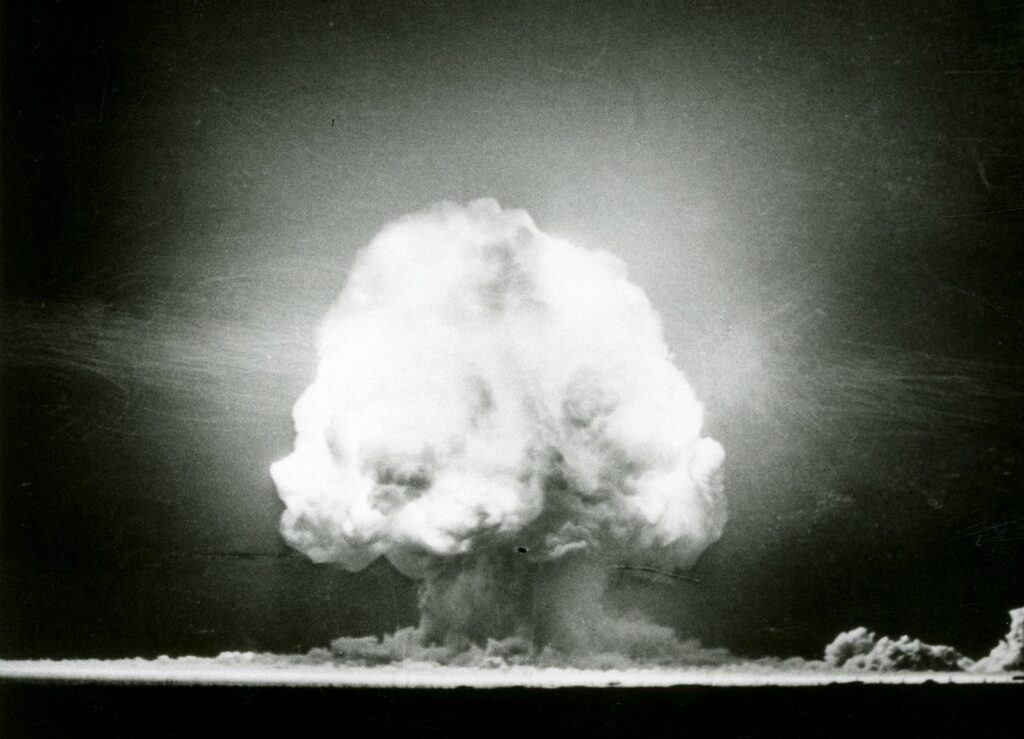
Likewise, AI is now launched, it is here, among us, and will continue to follow its “natural” course almost ineluctably. If it ever suffers a slowdown, it will be due to its own structural reasons, due to excessive growth, due to the inadequacy of those who lead it, or due to too much voracity. Or for external reasons linked to changed global economic conditions, military conflicts, excessive demand for resources, excessive impact on the climate, etc. We, individually or collectively, can do little, except a form of “humanistic resistance”, as Duhamel called it, that is, simply refusing to use this tool in any way and denouncing the “theft” of our data and contents to fuel the “beast”.
But how exactly is Generative AI so DIFFERENT from every innovative technology seen so far?
For the first time, a combined software and hardware technology aims not simply to support a human activity by making it more agile, faster, efficient and economical, but potentially to replace the human component of that activity itself. And where the human component is more present, so much so as to be dominant as in the arts, the higher and deeper is the threat and potential damage.
For example, in past times a writing program, such as Word – which I am using right now here – aimed to provide the writer with a tool that would allow him to express his thoughts in written form in a faster, more agile way, technically correct, providing him with a whole suite of tools aimed at making his life easier, to concentrate as much as possible on the mental act of writing, relieving him of all those technical tasks that once slowed him down or distracted him: from the spell checker to the thesaurus dictionary, to the possibility of deleting, moving, modifying, copying, pasting words and texts, to the cleanliness and intrinsic order of digital files compared to the disorder and difficult management of old paper notebooks.
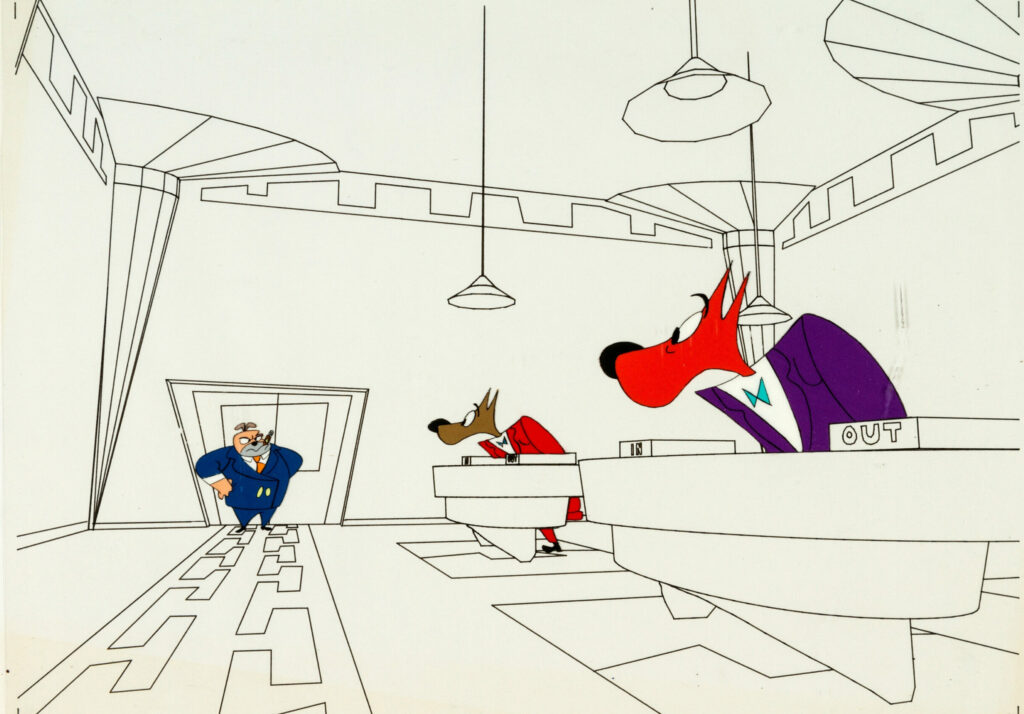
An application like Chat GTP, on the other hand, explicitly aims to replace not so much the “author” as such, who could be somehow assimilated to the user of the program, but his thought, and his ability to process it, tracing it instead through algorithms over an immense volume of words, concepts and contents expressed by other individuals, totally anonymous, and chaotically accumulated in these immense bottomless “cesspools” that are global databases.
In other words, Generative AI aims to artificialize and therefore replace not so much the artist (in this case the writer) as a living and thinking being, but his very thought, his imagination, his dreams. It is no coincidence that the first serious agitations on these issues were promoted by Hollywood screenwriters’ unions.
From all this it is easy to understand what the looming threat is, in particular for those who, like us, professionally embody the human creator of this creative cycle, and from whom they aim to take away the control and ownership of our own thoughts.
It is not just, as many seem to limit themselves to fearing, the removal without compensation of our personal data, thoughts, images, to feed with them the endless pool from which the system draws. In short, it is not simply a question of Copyright. Because if this were the case it would be easily (at least in theory) solvable, just forcing the AI organisations to pay a decent fee for any content stored and used.
Unfortunately, even if each of us received financial compensation for our contents when they were transferred into the database, that is, if what is now a theft were “magically” transformed into an economic exchange, in reality we would not have solved anything. It is not comparable to the sale of one of our illustrations for publication on some edition or platform. The real “damage” occurs AFTER this hypothetical transaction (which for now is still solidly pure and simple theft), and is much more profound and epochal than the simple loss of jobs of a few thousand professional artists.
It is precisely about that “intellectual decadence” that Duhamel denounced, even though he certainly could not even remotely imagine that it would be talked about again and even with more urgency, almost a hundred years later: on the one hand, the progressive detachment of these “works” from any human conscience; and on the other, the impossibility for the very definition of “artificial” to simulate “talent”, whatever it may be, in the generation of the product, whatever it is. Which from an “intellectual property” would have changed – in perfect line with capitalist ideology – into a “product”.
On the one hand we are witnessing a gradual but inexorable detachment of the artworks from their essential human component. On the other hand, the very definition of “artificial” denies these instruments any possibility of replicating or even simulating “talent” (not to mention “genius”), which as we have seen are properties that can be recognised exclusively by human beings (spectators, audiences, readers, viewers) towards other human beings (the artists).
However, this is not the greatest risk and damage, in my opinion: much more profound is that potentially caused to what I could call the “transmission belt” of knowledge, culture, learning, testimony and memory.
The new generations of artists, exposed from birth to these tools and to the prodigious simplification that they seem to promise, would no longer feel stimulated to produce new ideas, new visions of the world, new schemes, but to settle on the materials proposed by the proprietary algorithms, in limits and under the conditions dictated by their owners. Consequently, on the part of the public, there would be a gradual progressive and inexorable impoverishment of the artistic product, at the expense of the characteristics of uniqueness, originality, novelty and unrepeatability of the stories, images, sounds, creative works, thus amputated of human talent and genius.
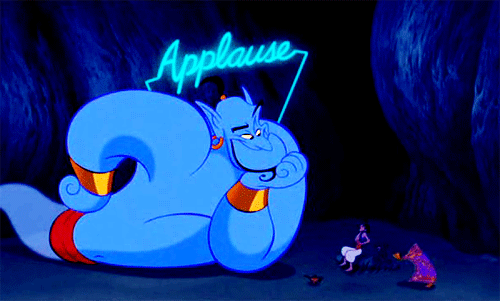
Some object to this alarm, which they consider excessive, “Luddite”, hostile to progress due to bias or ideology, recalling how our sector has already undergone periodic and profound “crises” many times, almost always linked to technological evolution, but also to major oscillations of a market that is by definition unstable and capricious such as that of taste and cultural fashions; and which has always recovered, renewed and relaunched itself towards new development prospects that were hitherto unpredictable.
And this is true, even if this opinion tends to overlook the fact that behind these recurring “crises” there has always been a heavy sacrifice of people, talents, human beings who suddenly have lost in temporarily or permanently their sources of livelihood. Therefore it is a vision already in itself flawed by a sort of social Darwinism of a vaguely reactionary nature (the strongest wins, whoever knows how to adapt wins, whoever knows how to beat the competition wins, the losers lose, etc.), which we could easily define as ethically cynical and morally intolerable.
But the crucial point is not even this, because what is lost sight of in this kind of comparison is the absolutely unprecedented and devastating nature of the current “crisis” compared to all previous ones.
Now it is not simply a question of a change in technological paradigm and language: the advent of sound erased cinema as it had been experienced, produced, distributed and received up to that point almost overnight, profoundly revolutionizing the industry and costing the careers of many artists, actors, stars, and specialized workers hired in the studios. It was certainly a social massacre, but it was also a trauma that led to the birth of a completely new language, far from the old silent “pantomime”, bringing the public closer to greater identification in the story, and promoting the roles of a whole new generation of skills, intelligence and talents.
None of this is evident in the current situation, the language does not change, the “hardware” production process remains substantially unchanged, there are no new creative categories in sight, on the contrary, the whole process is in fact a process of pure subtraction, without any compensation. And this subtraction is carried out entirely at the expense of the main human component, therefore aiming at the very living and beating heart of the cultural industry, that is, the creativity and talent of the individual artists.
We add that every artistic expression is essentially an act of communication of an individual/human being towards another individual/human being (or group/community of individuals in the case of a collective art form, such as cinema, but also architecture, for example). Eliminating the human component from one of the two ends of the thread makes communication meaningless. In fact there is no longer any “communication” at all, the thread breaks.
These are all open questions, which demonstrate the great complexity of the issues at play. But what matters here and now is to recognize that we are now INSIDE this change, this revolution, or this battle, call it whatever you want, and that the process has begun, and nothing, unless unforeseeable conditions or events intervene, can not only stop it, but not even slow down a bit in its course.
We would like to point out that this technology, in other fields, promises to truly be an instrument of progress (particularly in the scientific field: in the previous chapters I have presented some notable examples), but in the artistic and cultural industry we cannot fail to note risks and critical issues that, if left unmanaged, far outweigh the possible, currently far from granted, advantages.
How should we, as operators in this industry, position ourselves towards this ongoing “last revolution”?
Trying not to give in to harmful emotionality, and to remain anchored to rationality and an objective analysis of the facts, I would say that we are faced with three possible attitudes, or action schemes:
A) À la guerre comme à la guerre (At War as at War)
We could simply oppose the entire process decisively and with all our might, refusing any contact with it, denying its legitimacy, contesting its methods and principles, and attempting to force politics to promote restrictive laws, or better, highly restrictive ones, on the use of these tools in the artistic and Copyright fields.
Following Umberto Eco’s lesson, I could define this position as “apocalyptic”, even if it is perfectly legitimate, it is not rearguard or reactionary. Indeed in some respects I would even consider it dutiful, especially at a time when we have to equip ourselves to defend the artistic property of our achievements from the robbery carried out at our expense by data collection agencies and from the unauthorised use that is made of them.
However, it is a battle perhaps lost from the start, and in any case purely defensive, which limits itself to responding to fire as best it can, therefore with means that are difficult to compare with those available to the “enemy”, but which is not capable of affecting the root of the problem. AI applications will continue to evolve and expand their hold on the market, at least in the short/medium term (because in the long term we do not yet have enough data to predict if and how some stable and non-destructive balance will be ever established), and in the meantime thousands of more or less senior jobs in the creative sector will be pulverized, and we, proud of our coherence and incorruptibility, clinging to our “ivory towers” , we will only have to watch the ruin and devastation that would result. The process will continue its course, and we will simply be excluded from it (and no one, except our own conscience and pride, will care to know that we will have voluntarily “self-excluded”).
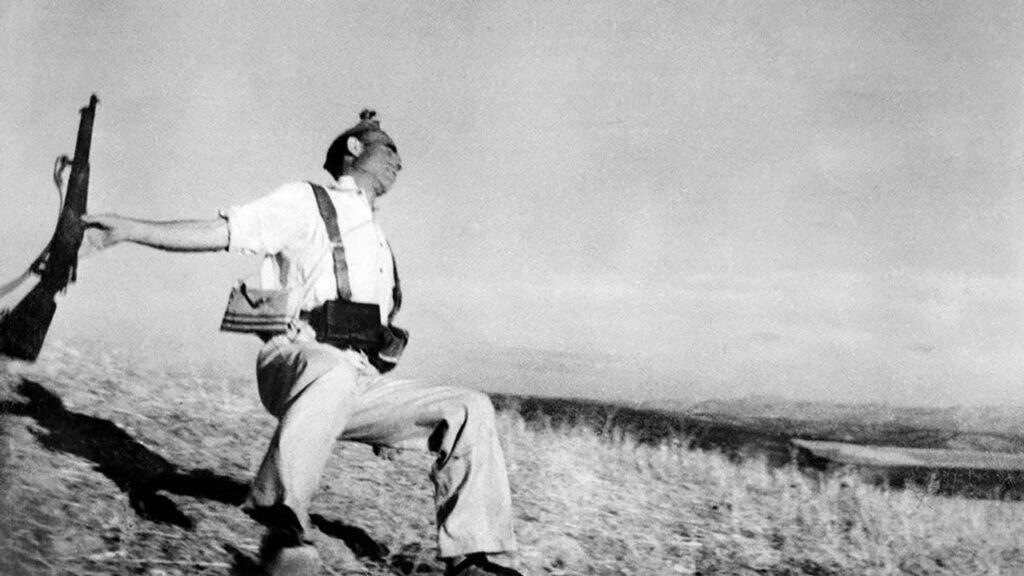
B) Joyful Integration
On the other hand, we could “integrate” joyfully, welcoming innovation in the name of progress, and throw ourselves more or less uncritically into the gears of the process in order to obtain the greatest possible advantage in terms of personal growth, competitiveness and profit.
This is also a completely legitimate position, and is in line with what we have done in all the crucial steps that new technologies have gradually proposed – or imposed – on us.
Unfortunately, however, as we have seen, in this case it is not a simple, albeit radical, technological evolution, which we can and must align ourselves with in order not to remain isolated and excluded from the market because our products would end up being obsolete and surpassed by those produced from our competitors.
Here now the statute of the process is openly, as we have seen, that of replacing our competence and creativity (I’m simplifying) with sophisticated algorithms. For this reason our collaboration, even if apparently in the immediate future it could appear as a gain, a win-win deal, even an individual growth, in a longer period – and no longer just at an individual but collective level – would end up inevitably turning against ourselves, metaphorically making us do the end of Charlot sucked and crushed between the gears of the Big Machine.
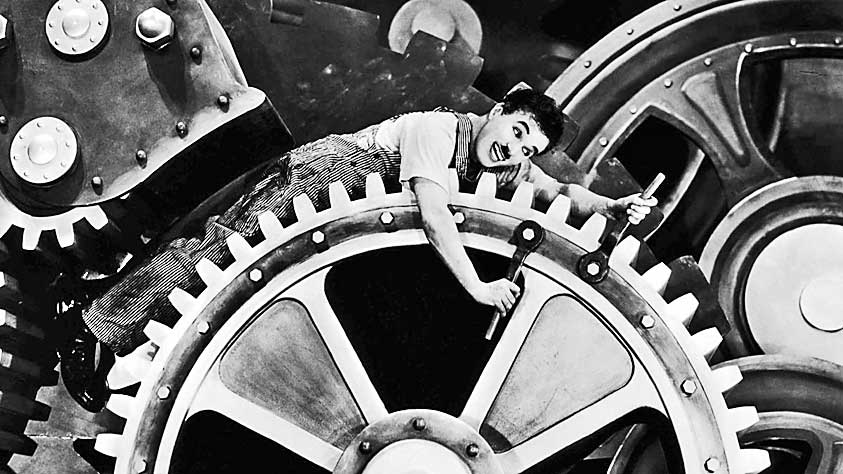
C) Active Resistance
But there is also, as always, a “third way”, which however is NOT the usual “middle way”, which in reality solves nothing except making us feel wiser or smarter. I would rather say a sort of fully alternate path, inventive, creative, but, above all, active.
Let us not abandon the battlefield to take refuge behind the walls of an increasingly fragile and unsafe castle. And much less do we surrender to the “enemy” by trying to quickly enlist in their ranks so as not to lose acquired or hoped-for advantages, contenting ourselves with picking up the crumbs that fall from their bandwagons.
What we must do instead is to work with even greater commitment to accentuate as much as possible the difference in quality, originality, variety, novelty, genius and humanity between what we know how to produce compared to what – artificially – the “machine” can do. Always reminding us – above all – that the public is not (yet) made up of machines, but of human beings like us.
In short, we can say, a real guerilla, a partisan war of Active Resistance.
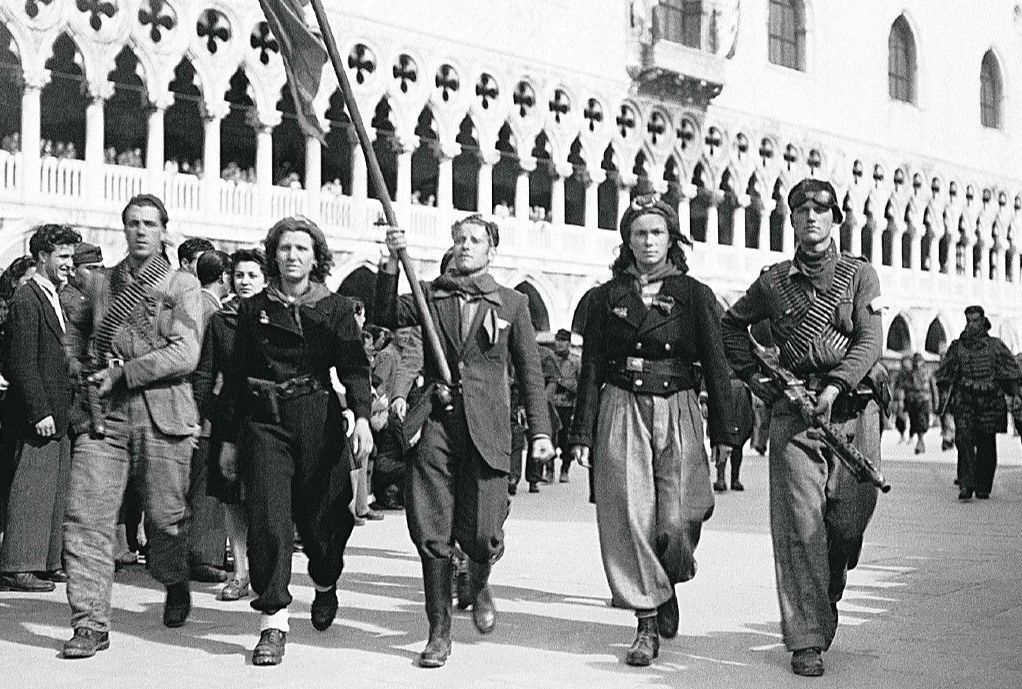
From a tactical point of view, it is useless to seek a clash on the ground and with the rules established by the adversary, we would never be able to prevail: the “machines” have on their side a computing power, a speed and production cost-effectiveness that no human, alone or in a team, is capable of equalizing, not to mention beating.
Instead, it is necessary to establish an exclusive “our” field, defined and impregnable, into which simply no AI system, however sophisticated and advanced, will ever be able to penetrate.
As we have seen, it is not pure and simple “skills” that can compete with those of the algorithms, but the unique and inimitable characteristic inherent in every human being, whether a more or less gifted artist, or what we have defined as “talent “. No machine, no algorithm, no processing system will ever be able to simulate talent, by definition, because it is an eminently and exclusively human quality that only other human beings are able to recognize. “Talent” (and its maximum expression, “genius”) is recognised only and exclusively because the observer “knows” that behind the product, the artefact, the work of art, there is a human being. Paradoxically, a human audience could accord wonder and amazement for the admirable precision of the IMITATION to the SAME identical work generated by an algorithm, but could never recognize talent and genius in it. Simply because he wouldn’t know who to attribute it to.
For this reason, all we can – and must – do now is to exercise our creative abilities in the field in which we engage day by day, and in order to do this we must recognise the origins and manifestations of our primary vocation, learn to recognise its foundations, and the principles that guide our choices and actions, and which we can apply on the technical tools we possess.
It is precisely to try to respond to this need for knowledge and method that the idea of starting to write this series of articles was born. Also, and in particular, because the art of animation (character animation), which is the subject of this discussion, it is considered more of an performative art than a creative one, and therefore by its nature more exposed to the aggression of artificial intelligence generative technologies. The problem arises less for writing, for example, where the purely creative component is much more dominant, if not exclusive. Or in musical composition, for which the same applies. Instead, apparently, an instrumentalist, a violinist in a symphony orchestra, is much more defined by his performative and interpretative excellence than by his more purely creative vocation.
In the same way, an animator must understand what his real role means, and what the role of his talent is in all this, to demonstrate with facts his irreplaceability ALSO on a creative level.
It is precisely to try together with you to identify, define and establish the creative foundations of this work that these conversations were born.
Initially the idea was to organize a series of thematic “courses”, but in reality this could not fully correspond to my intentions.
There are dozens of courses of this type around, some excellent, paid or free, and many excellent “in person” schools where students can learn the basic and advanced techniques inherent to animation to perfection.
However, what I felt was missing the most was more a treatment of the subject from a more wide-ranging point of view, from a less technical and more theoretical perspective, something that was closer, for example, to a treatise on musical theory, rather than a practical course on how to play a particular instrument.
Even in music, an AI algorithm would today be perfectly capable of “interpreting” a Bach’s piano piece “as if” it were Glenn Gould himself playing it. And there are very few who would be able to distinguish the two tracks simply by listening. We take this for granted, no one doubts the now prodigious processing capabilities of these systems. But we are instead interested in understanding why Gould is Gould. And because he is and remains inimitable and irreplaceable. And why and how, today, another great pianist like Láng Lǎng, on the same pieces, is Láng Lǎng. Why and how he is completely different from Gould, yet capable of releasing an equally high and undoubted “aura” from his interpretations of Bach.
This is why I thought of diving in depth into the generative secrets of our art, starting from understanding why we are who we are, as artists, what is the drive, the motivation that brought us, and that every day brings us, to our desk, to our Cintiqs, to our computers.
And what are the sources and goals of our inspiration and our vocation, two other dimensions of an exclusively human nature beyond the reach of any artificial system: a “machine” (i.e. an algorithm) will never know an “inspiration”, but only a massive input of data to be processed, nor even a “vocation”, but just a series of strings of instructions, of algorithms, activated for the purpose of processing that same data and returning it with a complete meaning.
Powerful hardwares, super-fast processors, huge memory packages, highly sophisticated algorithms, data centers hungry for data as well as energy: the public is and will always be aware of all this, and for this reason it can never be completely deceived if not by his own – always aware – choice. It is all our now the task to draw the boundary of this choice, and to ensure that this public is put in a position to know how to discriminate without hesitation – in the mass of materials that reach it in a magmatic and uncontrollable way – so to speak, “the wheat from the chaff”.
I am sure that the public is perfectly capable of distinguishing the human, original, exciting quality of a product in whose creation human intervention prevails, over that of its artificial imitation. As I was saying, the audience is human, it is not artificial. The aura, the soul, is recognizable as original and unique only in the human product, and it is only it that can create the irreplaceable relationship of identification with the audience.
First vinyl records, then CDs, have never been able to replace live concerts, but only make music listening more widespread – thus also increasing the demand for concerts. Ultimately, it’s the same as what happens with our work. But the public will be always and increasingly attracted, in my opinion, by the warmth of the human communication, just as people still flock to theatres (and arenas) to listen to a Láng Lǎng or Bob Dylan concert live.
We must ensure that these theatres, these arenas survive, because this is, remains and will always remain the public’s demand,: I am firmly convinced of this, AI or not, and I feel I can be basically optimistic about this.
But it will ultimately depend, however, only on us, from now on.
In the next chapters I intend to continue along this same path.
I will try to examine the foundations of animation, as we know them from the extensive technical and historical literature on the subject, and to address its content, not so much from a strictly technical point of view, but from a historical and methodological one, and above all by trying to draw a coherent and stimulating theoretical line, also on the basis of theories of perception, which is what first pushed me to start this wonderful profession.
See you soon!
